Baiyun Mountain (白云山, White Cloud Mountain), located in Guangzhou, covers an area of 21.8 square kilometers and is a renowned mountain in southern Guangdong. Historically known as the “First Beauty of Yangcheng,” Baiyun Mountain is made up of over 30 peaks and is an extension of Jiulian Mountain, with its main peak, Moxing Ridge, reaching an elevation of 382 meters. Its cultural history dates back to the Neolithic era. In the Southern Liang Dynasty, the monk Master Jingtai built Jingtai Temple on the mountain, leaving behind the famous scenic spot “Monk Jingtai’s Return.” During the Ming and Qing dynasties, Baiyun Mountain was featured in three of the Eight Scenic Spots of Yangcheng.
The mountain is divided into several tourist areas from south to north: Luhu Scenic Area (main attractions include Luhu Park and Xinghai Garden), Santailing Scenic Area (known for Yuntai Garden), Mingchungu Valley (popular for birdwatching and features Mingchungu Valley and Summit Park), Moxing Ridge Scenic Area (home to Moxing Ridge and its Observation Pavilion), Mingzhu Tower Scenic Area (famous for Peach Blossom Ravine and Plum Blossom Valley), Fei’e Ridge Scenic Area (near the north gate with the Sculpture Park), and Heyi Ridge Scenic Area (featuring Yunxi Ecological Park). Among these, Yuntai Garden, Mingchungu Valley, and the Sculpture Park are nationally renowned.
Baiyun Mountain offers year-round opportunities to admire its rich variety of plants. The peak blooming season is from June to August, while December sees the fewest flowering plants. Common floral species include crepe myrtle, kapok, floss silk tree, Bauhinia, and flame trees. Notable plant landscapes include the Bauhinia on Luhu Road, the red Bauhinia and Hemerocallis along the main road of Mingzhu Tower Scenic Area, the Lagerstroemia in Mingchungu Valley, the red maple forests of Moxing Ridge, and the thousand-year-old tung trees in Heyiling.
Table of Contents
- Basic Information
- Location and Transportation
- Map and Recommended Routes
- Luhu Scenic Area
- Santailing Scenic Area
- Mingchun Valley Scenic Area
- Moxing Ridge Scenic Area
- Mingzhu Tower Scenic Area
- Heyi Ridge Scenic Area
- Fei’e Ridge Scenic Area
- Vlog about Baiyun Mountain
- Other Natural Senery in Guangzhou
Basic Information
| Estimated Length of Tour | 1 day |
| Ticket Price | 5 RMB |
| Opening Hours | 24 hours a day throughout the year |
| Telephone Number | 0086-020-37222222 |
Location and Transportation
Baiyun Mountain, also known as White Cloud Mountain, is situated at No. 801, Guangyuan Middle Road, Baiyun District, Guangzhou, Guangdong Province, China. To get there, you can choose one of the following ways:
Bus: Take bus 38, 66, 76A, 76, 223, 245, 265, 529, 706, 864, 982, or B18 and get off at Guangzhou Stadium stop (广州体育馆站).
Metro: The closest metro station to Baiyun Mountain is Baiyun Park (白云公园) on line 2. After getting out of the station from Exit C, walk about 600 meters to the east to reach the west entrance of the scenic area.
Map and Recommended Routes
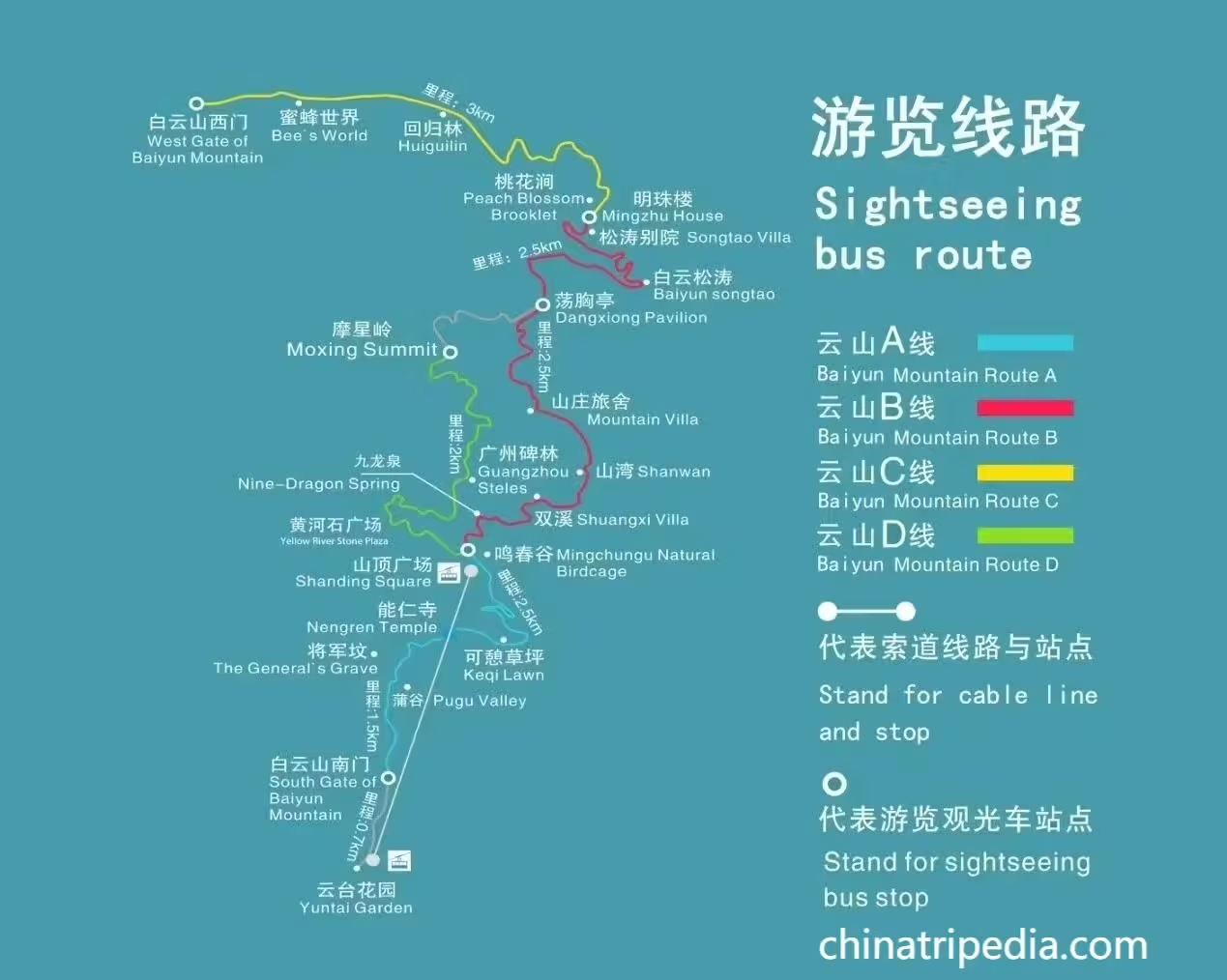
| Route Name | Overview | Highlights |
|---|---|---|
| Tour Route A | 23.4 km from Luhu Scenic Area to Mingzhu Tower Scenic Area. | – Luhu Scenic Area: Explore Luhu Park, Honghu Tower, Xinghai Garden. – Santailing Scenic Area: Visit Yuntai Garden. – Mingchun Valley: Walk or take a vehicle to Pugu, Nengren Temple, and the Dream Stone. – Moxing Ridge: View Guangzhou Stele Forest and Jiulong Spring. – Mingzhu Tower: Explore Shanzhuang Hotel, Shuangxi Villa, and Baiyun Songtao. |
| Tour Route B | 1.16 km from Lianquan Gate to Kexi Lawn. | – Mingchun Valley: Enter through Lianquan Gate, visit Pugian Lianquan and Kexi Lawn. |
| Tour Route C | 3.45 km from Kezilind Gate to Summit Park. | – Moxing Ridge: Hike from Kezilind Gate to Liang Peilan’s Tomb and Jingtai Temple. |
| Tour Route D | 3.19 km from Yunxi Ecological Park to Moxing Ridge peak. | – Heiyi Ridge: Explore the three major gardens of Yunxi Ecological Park. |
Luhu Scenic Area
Luhu Park
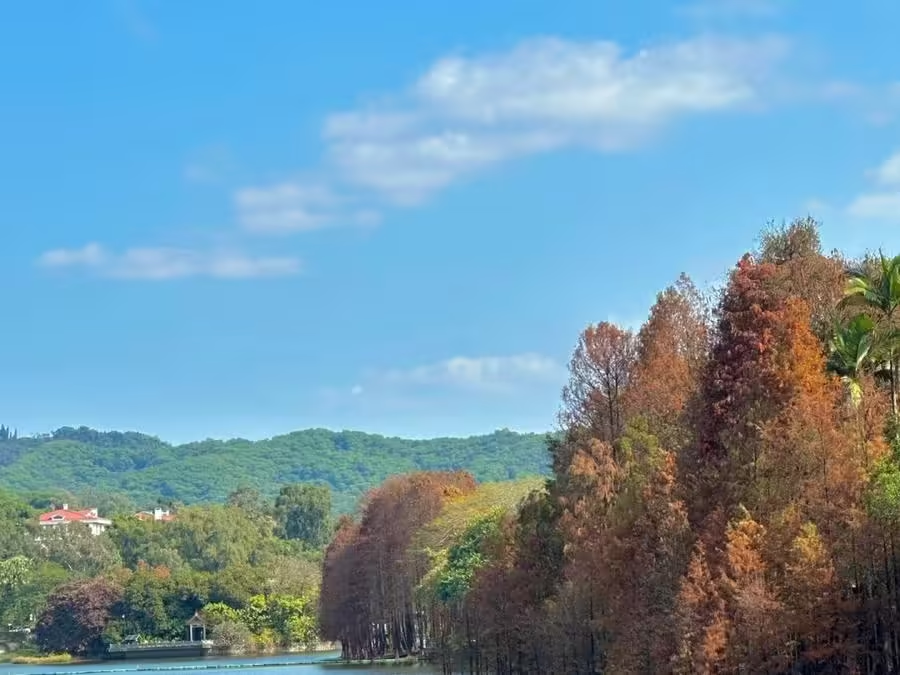
Luhu Park is situated on the northern side of Guangzhou, at the southern end of Baiyun Mountain Scenic Area. Covering an area of 2.05 million square meters, it includes a water area of 210,000 square meters. Over the years, the park has evolved into a large urban landscape garden, renowned for its stunning lake and mountain views. Key attractions within the park include Jufang Garden, Children’s Playground, Xinghai Garden, and Baiyun Immortal Pavilion.
Honghu Pavilion
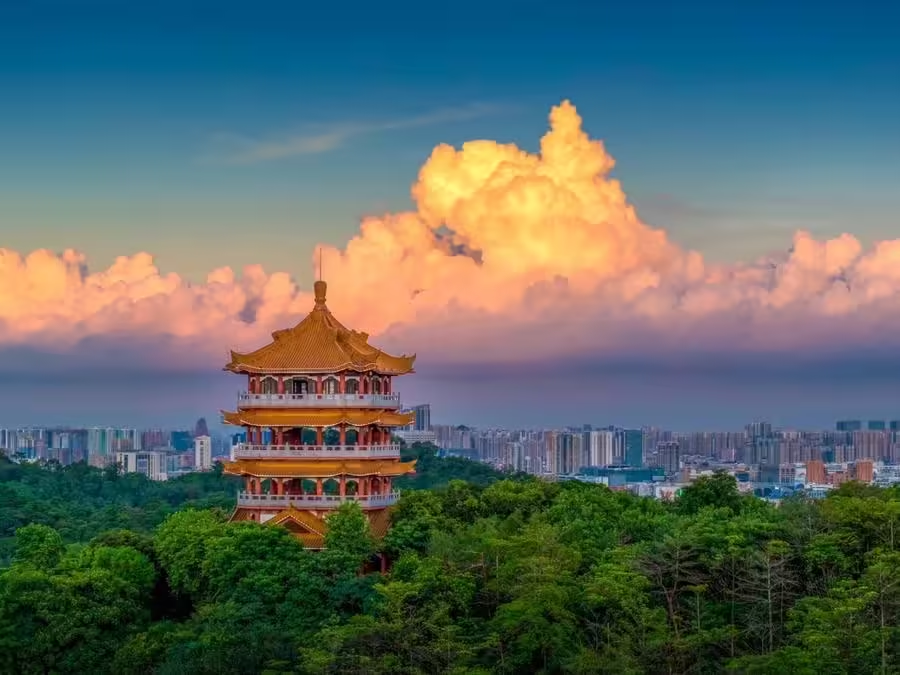
Honghu Pavilion is a five-story Chinese-style structure with a total area of 548 square meters and a height of 24.5 meters. Built in 1987, it occupies 158 square meters and is one of the largest classical buildings in Guangdong Province. It holds the title of the tallest garden structure built since Guangzhou’s liberation, earning it the nickname “The First Pavilion of Pearl River and Cloud Mountain.”
Xinghai Garden

Located on the western shore of Luhu Lake, Xinghai Garden spans 15,000 square meters. Built to commemorate the renowned Chinese musician Xian Xinghai, it was completed on December 1, 1985, when Xian Xinghai’s ashes were reinterred here. The garden is surrounded by lush hedges and features a memorial hall, tomb path, statue, exhibition room, and memorial corridor. A 70-meter-long tomb path leads to a large platform where a bronze bust of Xian Xinghai stands on a reddish-brown marble base, housing part of his ashes. A 300-square-meter exhibition room showcases his life and achievements. Additionally, an outdoor activity area for youth, covering 1,000 square meters, includes badminton courts, bocce courts, and fitness equipment.
Santailing Scenic Area
Yuntai Garden
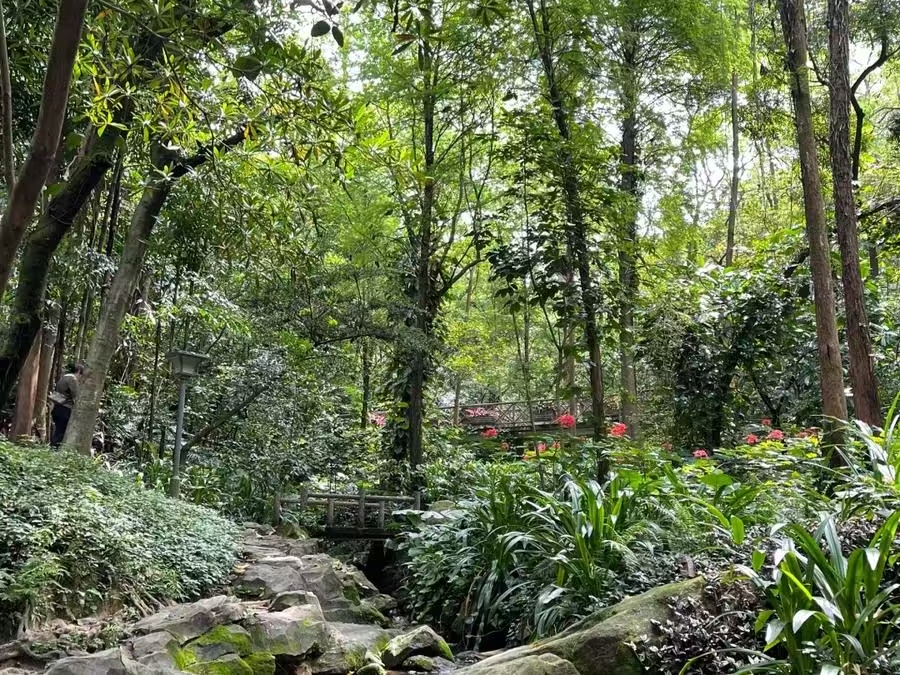
Yuntai Garden is located on the southern slope of Baiyun Mountain, covering an area of 250,000 square meters. It is named after Yuntai Ridge, which it rests upon, and is famous for its seasonal display of rare and exotic flowers from around the world. Opened on September 28, 1995, Yuntai Garden is modeled after Canada’s renowned Butchart Gardens, making it the largest Western-style garden in China. Its creation marked the end of Guangzhou’s “Flower City” not having a dedicated flower garden and earned it the nickname “Pearl of the Flower City.” The garden’s design centers around a grand staircase and a cascading illuminated fountain, with over 20 scenic spots, including the “Cascading Waterfall,” ground-level fountains, and Yan Lake.
Cascading Waterfall
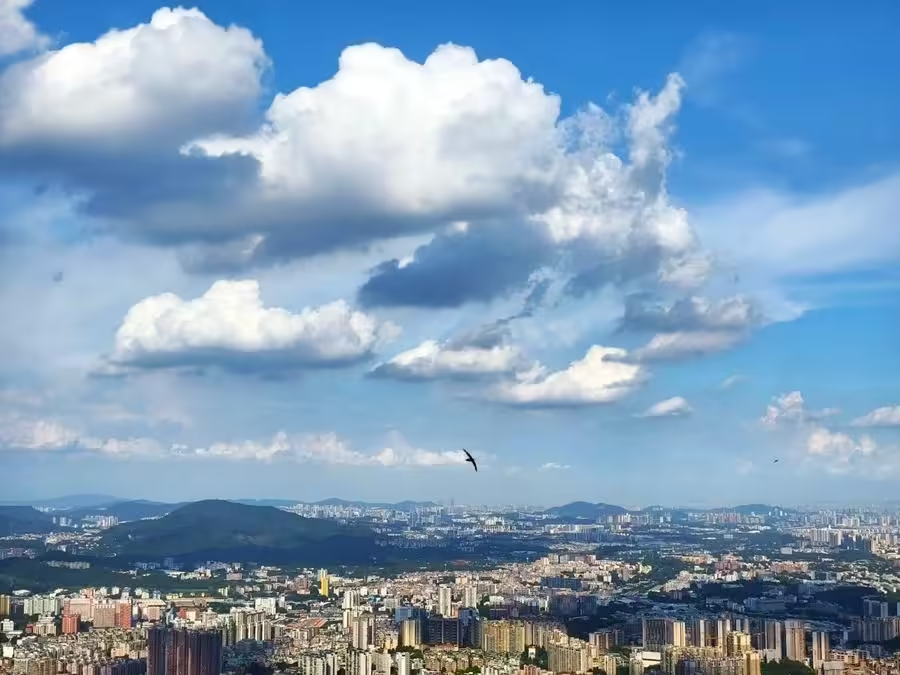
The “Cascading Waterfall” is the garden’s main feature. This illuminated fountain flows down 101 glass steps between two staircases, resembling a majestic waterfall. At night, the lights cast a golden hue over the water, creating a rainbow-like spectacle, hence the name “Cascading Waterfall.”
Rose Garden

The Rose Garden is the largest rose-viewing garden in Guangdong Province. It is home to nearly 10,000 rose bushes of over 100 varieties, including rare types such as Black Rose, Double Delight, and Princess of Morocco. Visitors can also find unique roses like the tiny Diamond Rose and the large, 20 cm-wide Champion Red Rose, as well as century-old rose trees.
Friendship Garden

Friendship Garden showcases gifts from Guangzhou’s sister cities, symbolizing the city’s diplomatic achievements. Notable displays include a Swedish wooden cabin from Linköping, a “Power of Eternity” sculpture from Auckland, New Zealand, and a “Giant Wine Pot” sculpture from Frankfurt, Germany.
Mingchun Valley Scenic Area
Nengren Temple

Nengren Temple is located on the left side of the climbing road at the southern foot of Baiyun Mountain, nestled within Yuhong Cave. The temple is surrounded by mountains on three sides and covers an area of 10,000 square meters. Established during the Qing Dynasty’s Xianfeng and Tongzhi reigns, it was restored with investment from the Guangzhou government in 1993 and opened to the public in May 1995. The temple complex includes the Main Hall, Ciyun Hall, and features 34 Buddha statues and 11 couplets. Notable historical sites within the temple grounds include Hupao Spring, Ganlu Spring, Yuhong Pool, Liuyun Piaoyue, and an ancient bridge. There is also a striking red “Tiger” character, measuring 2 meters high and 1 meter wide, written by the hero Liu Yongfu during the Franco-Chinese War.
Tian Nan Di Yi Peak (First Peak in the South)
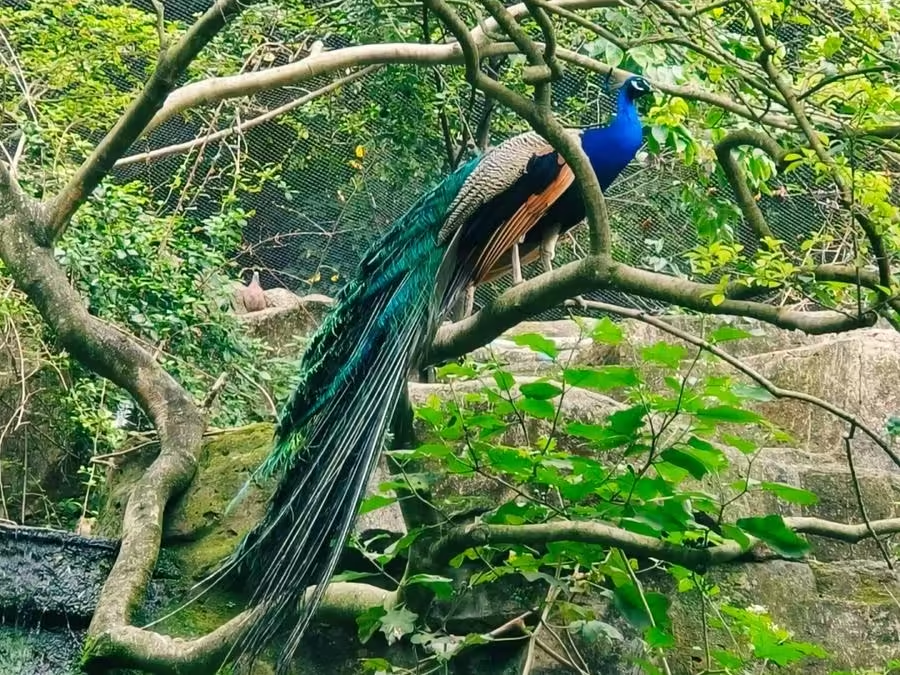
Tian Nan Di Yi Peak is located in the eastern part of the Mountain Top Park and is one of Baiyun Mountain’s most famous attractions. It has a long history, with a Buddhist temple established as early as the Tianjian period (502–509 AD) of the Southern Liang Dynasty. The peak features a granite archway, the only well-preserved ancient arch in Baiyun Mountain, inscribed with “Tian Nan Di Yi Peak.” Originally built during the Song Dynasty by Tao Ding, this archway served as a directional marker for those ascending Moshing Ridge. With the development of Baiyun Mountain, its original function as a guide has faded, and it has been renovated twice, now standing as an independent scenic spot at an altitude of approximately 200 meters, though it is not the highest peak of Baiyun Mountain.
Yunyan (Zheng Xian Rock)
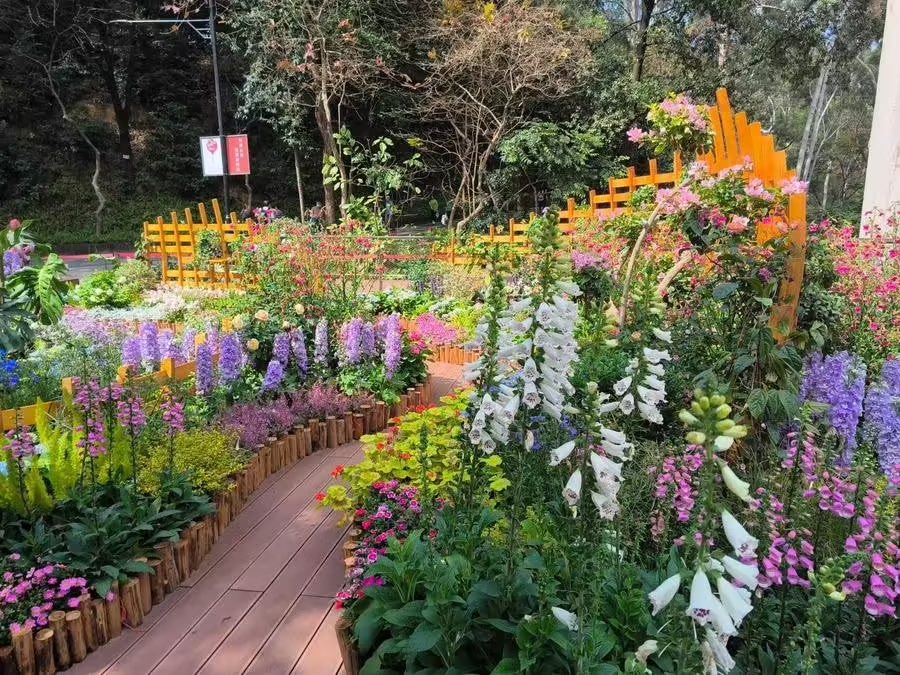
Yunyan, also known as Zheng Xian Rock, is located on the eastern cliff of Baiyun Mountain, below Tian Nan Di Yi Peak. It features steep cliffs and is believed to be the place where Zheng Anqi ascended to heaven riding a crane. To the right of its entrance stands the inscription “Hongchen Budao,” written by Deng Wanlin from Changsha in the 22nd year of the Guangxu reign.
Mingchun Valley

Mingchun Valley lies between Tian Nan Di Yi Peak and Jiulong Spring, covering an area of 56,000 square meters. It is known as the largest natural aviary in China and the second largest in Asia, having opened to the public in September 1989. The name is inspired by a line from Tang Dynasty poet Han Yu’s poem, “Thus, the birds sing in spring.” The valley is divided into six sections: the Bird Specimen Exhibition Room, the Large Aviary Area, the Rare Bird Exhibition Area, the Singing Bird Gallery, the Bird Training Performance Area, and the Dripping Rock Nature Scenic Area. More than 5,000 birds from over 150 species, including red-crowned cranes, swans, peacocks, and blue-eared pheasants, are kept here, earning it the nickname “Little Bird Paradise.”
Moxing Ridge Scenic Area
Jiulong Spring (Nine Dragons Spring)

Jiulong Spring, also known as Anqi Well, is the most famous spring on Baiyun Mountain, located within the Moxing Ridge Stela Forest. According to legend, during the Qin Dynasty, Zheng Anqi came to Baiyun Mountain in search of medicinal herbs but found no spring. One day, nine chubby white boys suddenly appeared, playing merrily. Shortly after, these boys transformed into nine colorful dragons and soared into the sky. At the spot where the boys had appeared, a spring burst forth, gushing with clear, sweet water. Zheng Anqi then dug a well at this site for people to use, hence the name Jiulong Spring. Known for its abundant and refreshing water, the spring features waterfalls that cascade like pearl curtains, making it a celebrated attraction. Since the Tang Dynasty, it has been a popular site for Guangzhou residents to pray for rain. Nearby, there used to be places like Jiulong An (Nine Dragons Temple) and the Dragon King Shrine, which are no longer extant.
Guangzhou Stela Forest
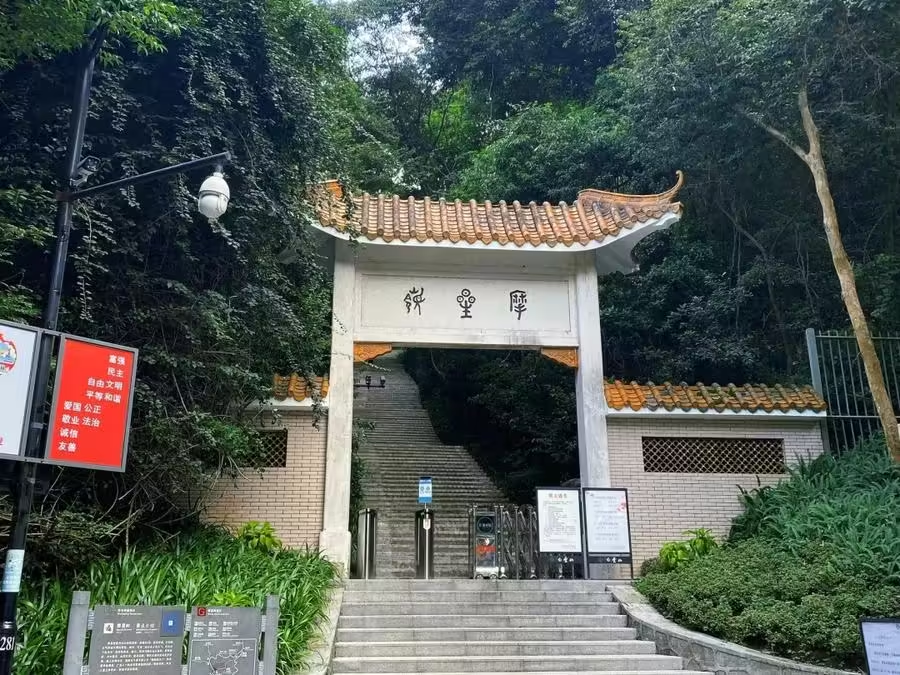
Located above Jiulong Spring at the foot of Moxing Ridge, the Guangzhou Stela Forest was originally the site of Baiyun Temple, one of Guangzhou’s ancient temples, which was destroyed during the Second Sino-Japanese War. The Stela Forest was established in April 1992 on the old site of Baiyun Temple and was completed and opened to the public in October 1994. Covering an area of 16,000 square meters, it features a combination of indoor stelae, outdoor monuments, and cliff carvings, all harmoniously integrated into a landscaped garden. The site includes three main areas: the Rock Carving Area, Nanyatang Hall, and Xianhe Xuan Pavilion, with nearly 300 stelae showcasing poems and calligraphy from various historical figures and modern poets celebrating the beauty of Lingnan, Guangzhou, and Baiyun Mountain.
Moxing Ridge
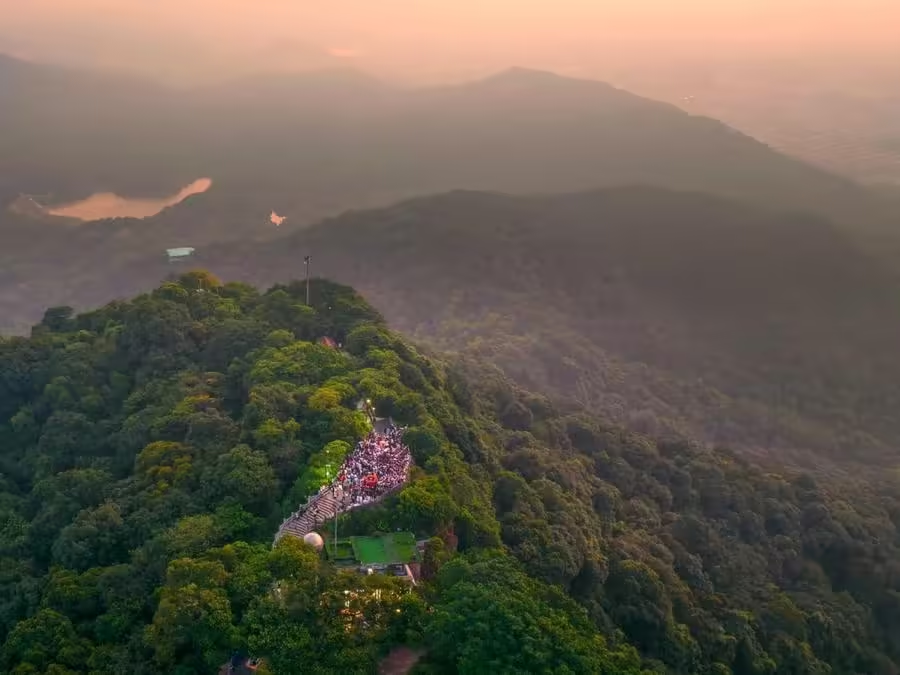
Originally named Biyun Peak, Moxing Ridge is situated between the Su Family Ancestral Hall and Longhu Ridge, with an elevation of 382 meters, making it the highest peak in Baiyun Mountain and the most prominent of its 30-plus peaks. Prior to the Song and Ming Dynasties, it was simply referred to as the First Mountain. The name “Moxing Ridge” first appeared in the “Guangdong Chronicle” compiled during the Kangxi era, where this peak was depicted as Moxing Ridge.
Climbing Moxing Ridge offers different views depending on the weather; on clear days, visitors can enjoy panoramic vistas of Guangzhou City and the Pearl River Delta. About 100 meters from the entrance of Moxing Ridge stands a large sculpted rock inscribed with the characters “Moxing Ridge.” This stone, 6 meters high and 4 meters wide, represents perfection and auspiciousness, earning the nickname “Auspicious Star Stone.”
Mingzhu Tower Scenic Area
Baiyun Songtao (White Cloud Pine Wave)
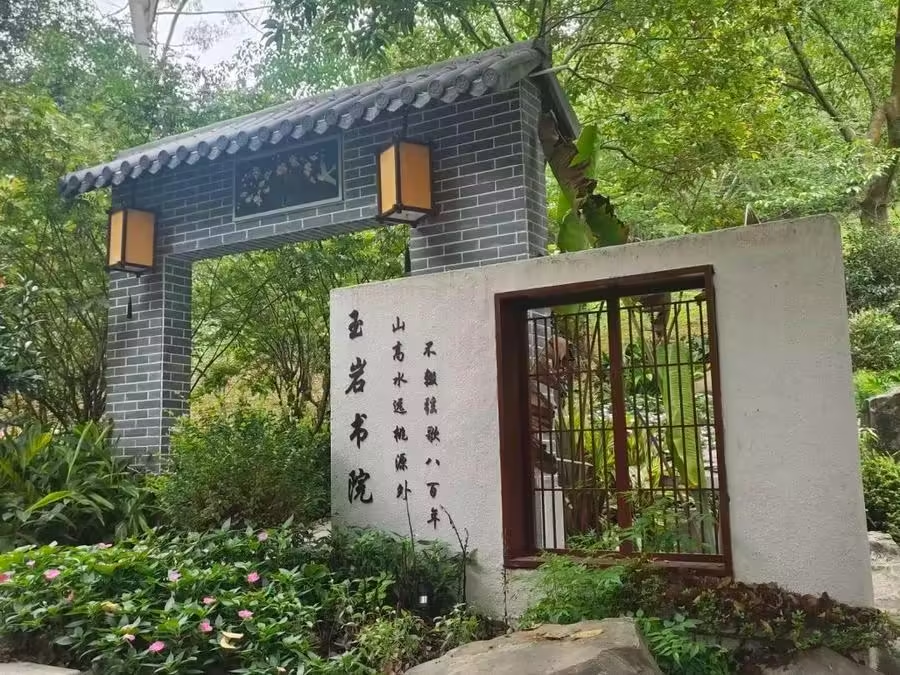
Baiyun Songtao, located along Yunshan North Road, was recognized as one of the “Eight Scenic Spots of Yangcheng” during the 1960s and 1970s. The four characters “Baiyun Songtao” are carved into yellow and white quartzite, a testament to the visit by Dong Biwu, an elder revolutionary leader, who personally inscribed the phrase here in January 1965. It is said that Comrade Tao Zhu greatly enjoyed coming to this place to listen to the waves and even penned the famous essay “The Style of Pine Trees” during his lifetime. Originally, this area was home to a dense forest of Masson pine; however, due to aging trees and pest infestations, these were replaced with high-quality Caribbean pines. Spanning over 330,000 square meters, the pine forest has thrived over the years, restoring its magnificent landscape.
Taohuajian (Peach Blossom Stream)
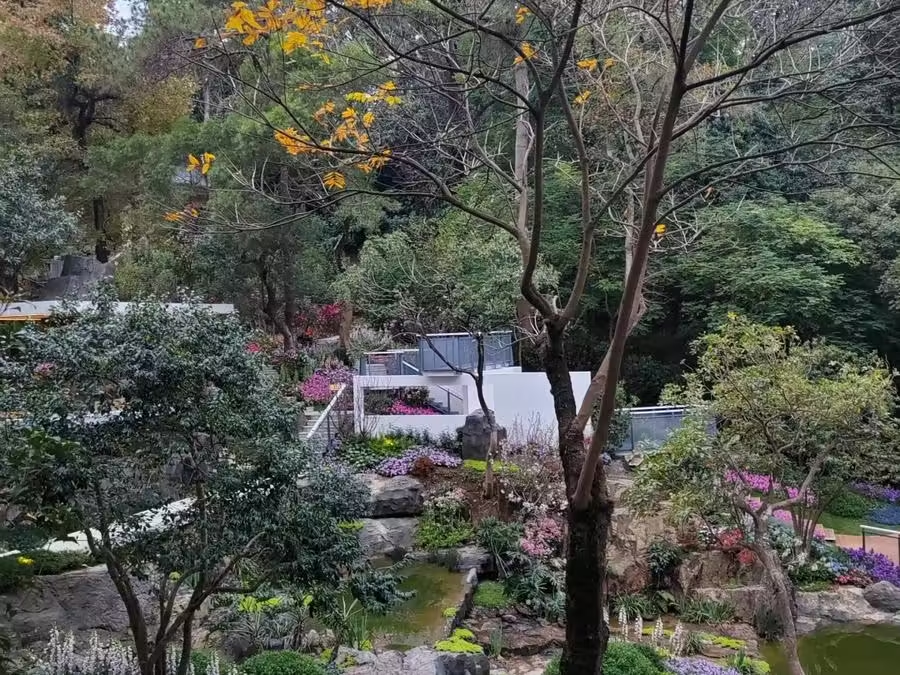
Taohuajian is situated at the heart of the Mingzhu Tower Scenic Area and is primarily known for its peach blossoms. The area underwent two significant renovations in 1999 and 2011, expanding to approximately 50,000 square meters. According to legend, a wise person from ancient times, disillusioned with the mundane world, discovered this beautiful location in Baiyun Mountain, where he decided to live in seclusion and dedicated his days to planting peach trees. Over time, the mountains became filled with peach blossoms, giving rise to the name “Peach Blossom Stream.” Inspired by Tao Yuanming’s “Peach Blossom Spring,” the site features a Chinese-style landscape garden, with varieties such as white peaches, longevity peaches, rosy peaches, and flat peaches. Notable attractions within the garden include pebble beaches, the Connecting Trees Pavilion, Peach Blossom Island, and inscriptions from “Peach Blossom Spring,” complemented by pavilions, sculpted stones, and flowing streams, making it a perfect place for sightseeing and relaxation.
Meihua Valley (Plum Blossom Valley)
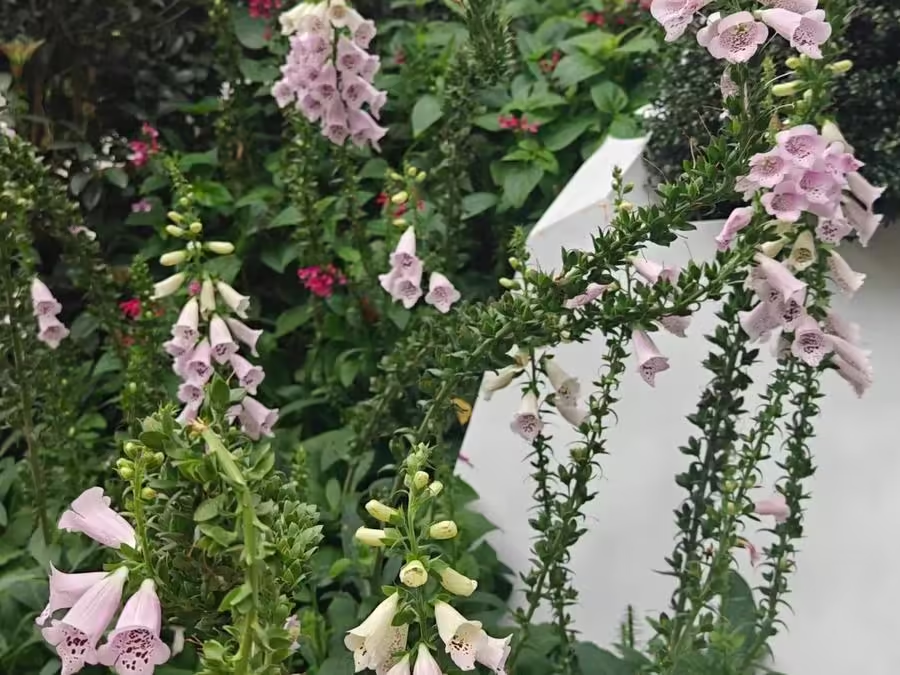
Located north of the Huangpo Cave Reservoir, Meihua Valley covers an area of 50,000 square meters and combines ecological forest, tourism, and cultural leisure. It opened to the public in January 2004. The valley is home to nearly a thousand plum trees, including over 460 fruiting plums, 120 beauty plums, 34 spring plums, 30 apricot flowers, and 150 cherry blossoms. Among the more notable varieties are the weeping plums, which feature branches that droop like willow twigs, and the large-fruited plums, characterized by a two-tiered crown and a trunk diameter of up to 30 centimeters, making them a major highlight of the valley.
Heyi Ridge Scenic Area
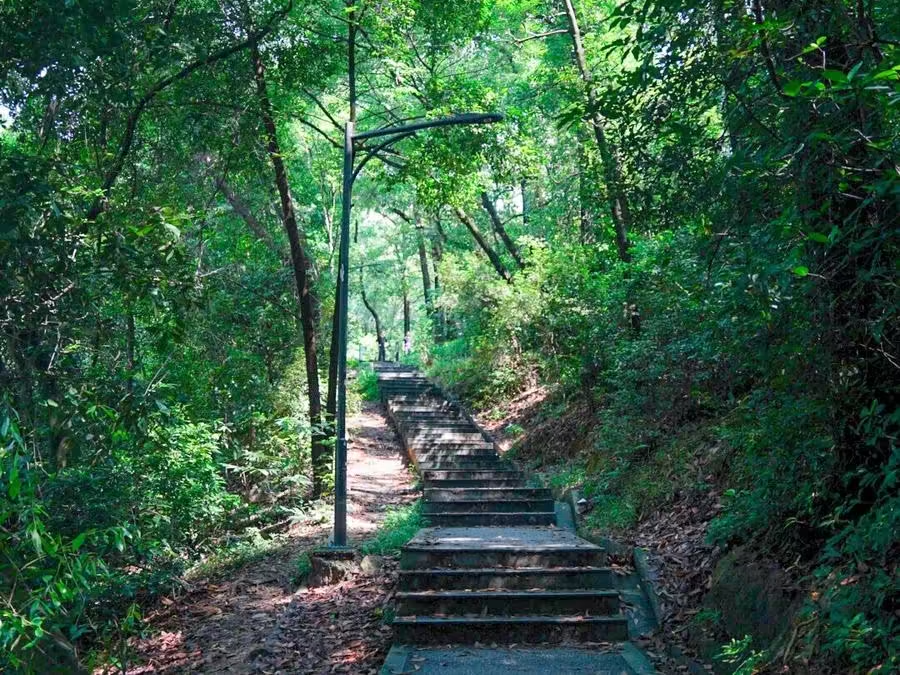
Heyi Ridge Scenic Area, also known as Yunxi Ecological Park, is the largest free public park in Guangzhou. Established in September 2001, it officially opened to the public on October 1 of the same year, coinciding with China’s National Day. The park spans an impressive area of 280,000 square meters, with approximately 258,000 square meters dedicated to greenery.
The centerpiece of the park, the Waterfall Garden, was developed based on three existing ponds. It features a cascading stream designed to harmonize with the valley’s natural topography and water sources. The gently flowing water meanders down like a stream in the clouds, inspiring the park’s name “Yunxi” (Cloud Stream Park).
The banks of the stream are adorned with a diverse array of flowering shrubs and water plants, including water caltrop, lotus, and bald cypress. Together, these elements create a vibrant and layered tropical wetland landscape that enhances the park’s beauty.
Fei’e Ridge Scenic Area
Guangzhou Sculpture Park
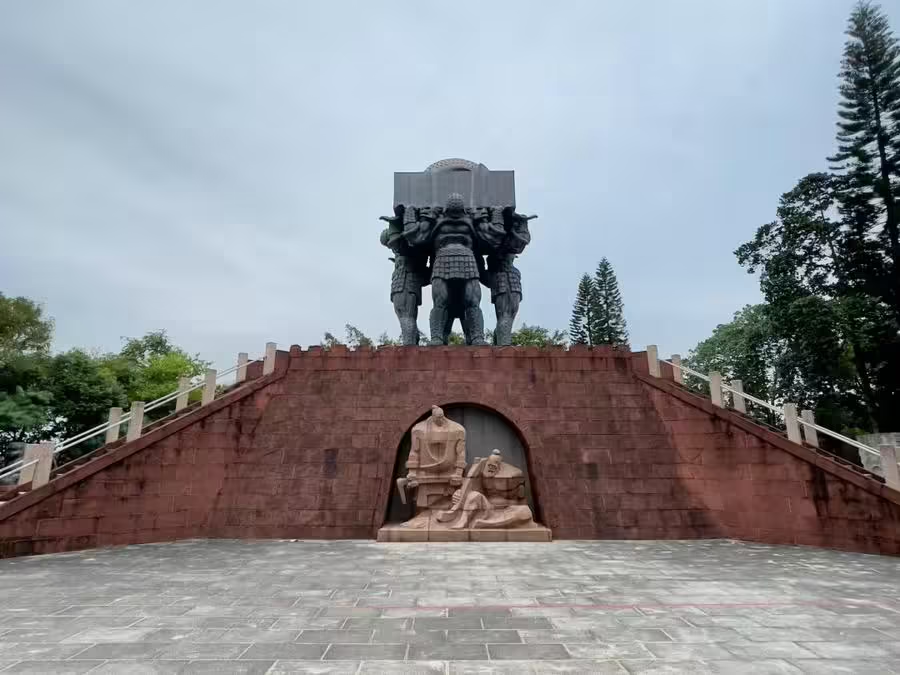
Guangzhou Sculpture Park is located on the west side of Fei’e Ridge in Baiyun Mountain, covering an area of 460,000 square meters. Construction began in 1996 to celebrate the 2,210th anniversary of Guangzhou’s founding. This park is one of the city’s civil parks and the only sculpture-themed park in Guangzhou, recognized as the largest themed sculpture park in the country. It is often referred to as a “green history book” of Guangzhou.
The park beautifully integrates sculpture with landscaping, offering both aesthetic enjoyment and educational opportunities. Through its sculptures, it narrates over 2,000 years of cultural history in Guangzhou. Notable sculptures include “Huaxia Pillar,” “Sculpture Square,” and “Glory of the Ancient City,” each representing significant aspects of the city’s heritage.
Xihua Well
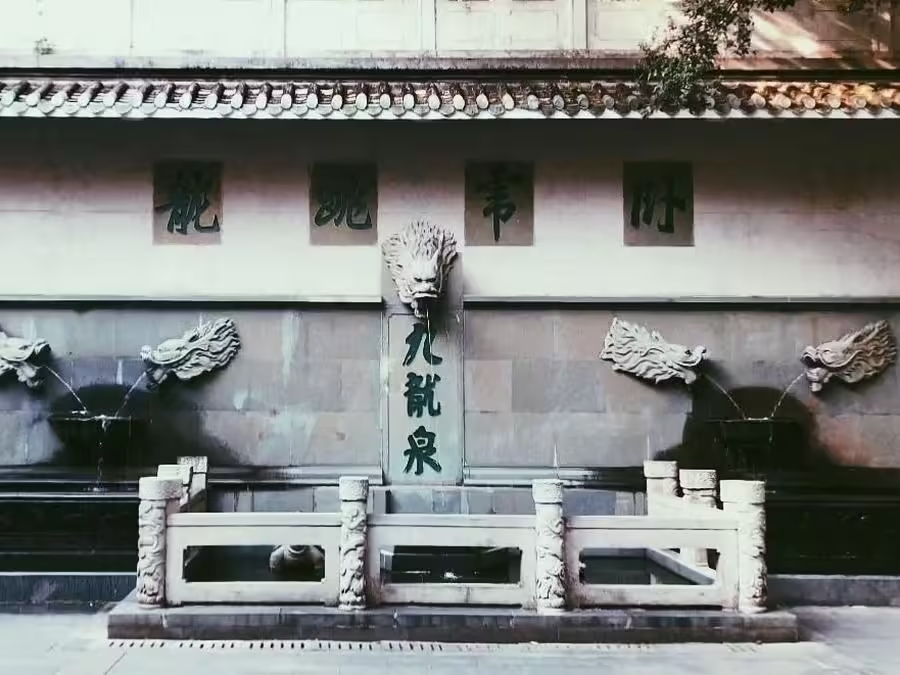
Xihua Well, also known as “Chicken Cutlet Well,” is located on the west side of the sculpture titled “Guangzhou Style Street.” The well features water that flows from crevices in the rocks, renowned for its high quality and often referred to as the “First Spring of Lingnan.”
Legend has it that in ancient times, when the city suffered from a lack of freshwater, residents from Liwan and nearby San Yuan Li relied on Xihua Well for drinking water. According to Huang Jianyan, author of the “Records of Guangzhou Water” during the Ming Dynasty, this well was listed as the top spring in Guangzhou. The words “Xihua Well” are inscribed on a rock above the spring. Today, the well is surrounded by stonework for protection, preserving its historical significance.

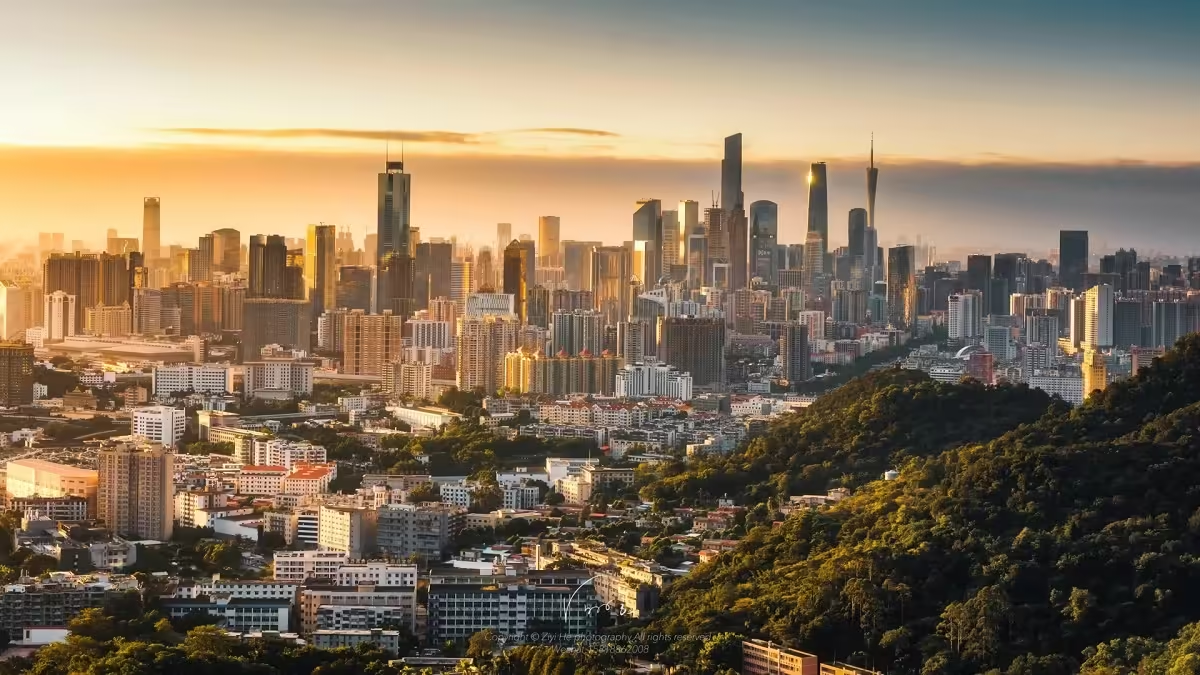
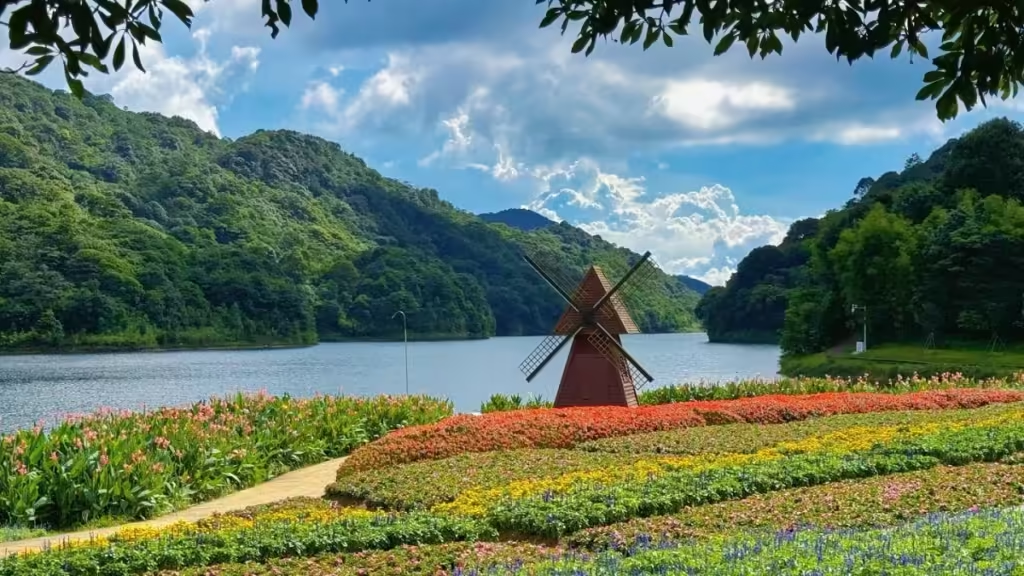



Today the weather is really nice. There is no one at the North Gate of Baiyun Mountain, and I can walk slowly by myself. It’s so quiet and comfortable.